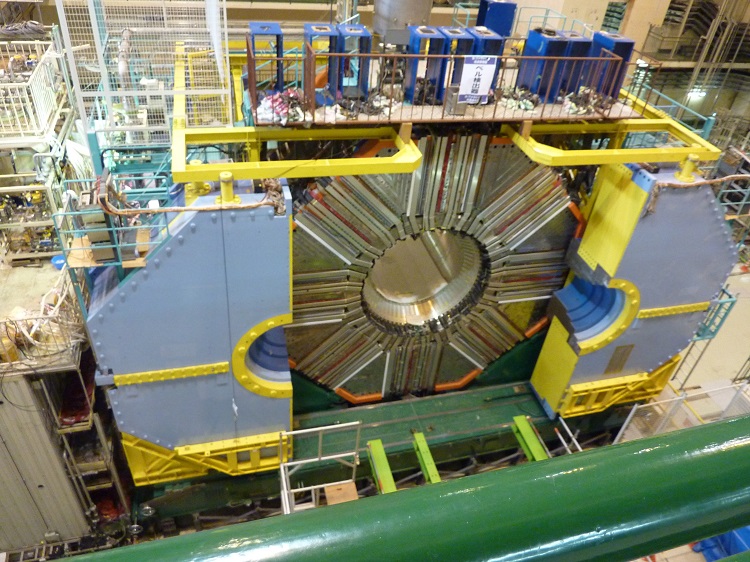New Particle Detector Could Reveal Universe's Missing Antimatter

A new ultra-precise particle detector is being developed to investigate the bizarre properties and behaviors of tiny elementary particles that seem to defy the laws of traditional physics.
The U.S. Department of Energy recently awarded $1.2 million to a team of physicists from Indiana University's Center for Exploration of Energy and Matter to build the new particle detector.
The data collected by the new and improved detector, called Belle II, could advance "New Physics," or physics beyond the Standard Model. [The 9 Biggest Unsolved Mysteries in Physics]
The Standard Model is thought to be the golden rule of particle physics. It describes particle behavior and correctly predicted the existence of other particles like the Higgs boson. But even though it is well-backed by experimental data, the Standard Model fails to explain many other mysteries in physics, such as the existence of theoretical dark matter, which makes up about 27 percent of the matter in the universe, yet does not emit light or energy and cannot be directly observed.
In particular, physicists think the Belle II detector could reveal more about the uneven distribution of matter and antimatter in the universe. Antimatter is made of particles with opposite charges of the particles that make up normal matter.
Previous theories predicted that particles and their antiparticles should exist in equal amounts and behave in the same way. But, in 2001, physicists used the first Belle detector to demonstrate a weird particle behavior called charge parity violation (CP violation). These experiments with B-meson particles and anti-B-meson particles showed that matter particles and their antimatter counterparts do not behave the same way. Physicists think CP violation explains why the universe is made of matter and not its mysterious relative, antimatter.
The first Belle detector has already confirmed the existence of other particles that don't fit the Standard Model, but now the detector is getting a facelift to make it much more precise. Physicists will use the upgraded Belle II to conduct similar experiments, but the detector is expected to collect 50 times more data than the original Belle.
Get the world’s most fascinating discoveries delivered straight to your inbox.
Belle II will be housed at the KEK particle physics lab in Japan, near Tokyo. The detector will be coupled with the lab's new SuperKEKB accelerator that will smash electrons and protons together at huge speeds by using powerful beam currents with 40 times the luminosity of older accelerators. The Belle II detector needs the tuneup so it can handle the extra intensity from the new accelerator. The detector will also get a pixel reader that will improve resolution and help physicists track the particles easier.
Belle II will complement experiments done with the Large Hadron Collider (LHC) in Geneva, Switzerland, where physicists famously confirmed the existence of the Higgs boson particle in July 2012. Even though the discovery of the Higgs lent more support to the Standard Model, physicists are using data from the LHC to look for evidence of particle behavior beyond the Standard Model.
The Belle II experiment is expected to begin in 2015.
Follow Kelly Dickerson on Twitter. Follow us @livescience, Facebook & Google+. Original article on Live Science.

